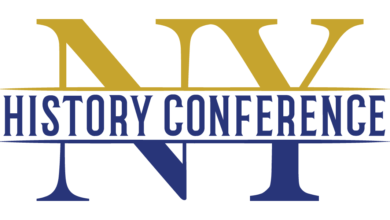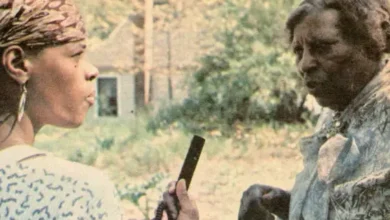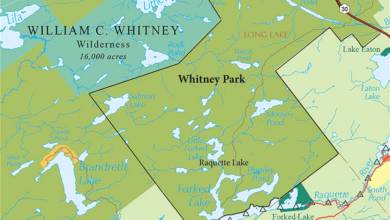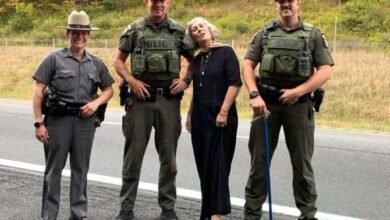From the Bicentennial to America 250: The New York Experience


 New York’s America 250 Commission is finalizing its plans for the state’s commemoration next year. In the meantime, it might be useful to look back at what the New York State American Revolution Bicentennial Commission did a half century ago.
New York’s America 250 Commission is finalizing its plans for the state’s commemoration next year. In the meantime, it might be useful to look back at what the New York State American Revolution Bicentennial Commission did a half century ago.
The commission carried out a number of activities. As it happens, I joined the Office of State History in 1973 and then moved to the State Archives from 1976 onward, so I recall much of this. The activities I recall best from my experience are summarized below.
(This is not by any means a list of all that the commission did.)
Use the commemoration to strengthen state history programs
Here, the precedent of the bicentennial commission is mixed. The commission was established in 1968 to lead and coordinate state commemorative activities. Its mission was expanded in 1971 to include the bicentennial of the creation of the state in 1777.
Its administrative arm or secretariat was first the Division of Archives and History in the Education Department, which dated from the early 20th century, and after 1971, the Office of State History in the State Education Department. That office was created in 1971 as successor to the Division of Archives and History, with expanded functions.
Louis L. (Len) Tucker was Assistant Commissioner (of Education) for State History, head of the Office of State History, State Historian, and Executive Director of the NYSARBC.
Early in 1976, the Education Department, in an economy move, disbanded the Office of State history. Len Tucker’s position and a few others were abolished. (Len later became Director of the Massachusetts Historical Society.)
The Office of State History and the state history functions were shifted to the State Museum, and Senior Curator John Still was named State Historian. The Local Government Records Unit of the OSH, where I worked, was shifted to the new State Archives (created in 1971), giving the new State Archivist, Ed Weldon (hired in 1975), his first permanent staff. That was the launch point for the State Archives.
Rick Allen, the Commission’s Program Director, became de facto head of the commission. State Museum history personnel continued supporting its work. State Archives personnel also helped occasionally. The Commission expired when its state funding ceased in 1979.
Hopefully, this time the commemoration will result in increased resources for the Office of State History and the Museum generally, the Archives, the State Library, the office of Parks, Recreation and Historic Preservation, and other state history programs.
Encourage and support local activities
There are already America 250 initiatives underway in several counties and other communities.
A half century ago, the state Bicentennial Commission carried out one of the federal American Revolution Bicentennial Administration’s “Bicentennial Communities” programs. The federal commission wanted to support a grassroots approach and community-led initiatives.
Applicants needed to show that they had a community planning committee and that the were going to pursue projects with a lasting, positive impact on the community. The federal commission made decisions, but the state commission got to carry out notifications.
Several of us went out in those years to give a brief speech (including why the bicentennial was important) and conduct a brief ceremony where we gave the communities special Bicentennial flags and plaques designating them a Bicentennial Community.
You can still see these hanging on the walls in some towns and cities. (I got to make the presentation at my home town, Berne.)
Produce historical publications with enduring value
The bicentennial commission sponsored, or was involved in the production of, a number of books, including Alice P. Kenney’s Stubborn for Liberty: The Dutch in New York (1975) and Allan S. Everest’s Moses Hazen and the Canadian Refugees in the American Revolution (1976).
It also published some booklet-length publications, including Four Traditions:
Women of New York During the American Revolution; 1777 and New York’s Political Revolution (on the first State Constitution; now available online; Garrison Town (on British occupation of New York City), now also available online; The Black Minority in Early New York; and Abraham Yates, Jr. and the New Political Order in Revolutionary New York. These concise publications were especially useful in the schools.
Getting the word out
The bicentennial commission issued a quarterly report/newsletter, The Correspondent, with news on its activities. It also issued press release for the media, in those days, newspapers, radio and TV (no internet and web yet).
Of course, and the 250 Commission has lots of means of communicating, including social media. Updates will also be available via the Office of State History.
But this also points out the value of New York Almanack. It is an unparalleled source for 250 commemorative events — and other history-related news – from around the state. It is a sustaining force in New York’s historical enterprise.
The 250th commemoration is yet another reason for all of us in the state’s history community to provide support for it.
“News” releases
For a time, the Bicentennial Commission issued what it called “historically oriented news releases” summarizing what the news was 200 years earlier.
For instance, on January 14, 1976, it issued “New York City Secured by Patriot Forces,” about patriot general Charles Lee’s moving patriot forces into the city to defend it against a possible British attack.
But on January 31, it issued “New York: A City in Suspense,” on tension as the city worried about a possible British invasion.
Films
The state Bicentennial Commission produced three motion pictures that were widely distributed and viewed.
And Take Me By the Hand covered the fighting in New York. It was narrated by then-well known actor Howard DaSilva. Much of it was filmed in summer and fall, when the color was at its height.
The Other Side of Victory (available online), filmed in the winter, was better at showing the harsher side of the war.
(The cast includes Tom Waites and Star Trek: Voyager’s Josh Clark, in their first credited roles; along with an early role for William Sanderson, later of Blade Runner, Newhart and Deadwood fame; David Naughton who would go on to star in American Werewolf in London; Mark Margolis who would star in Breaking Bad and Better Call Saul; among many others.)
Don’t Tread on Me: Voices from the American Revolution provided first-hand accounts.
We don’t know yet what is coming next year. But Ken Burns’s film on the American Revolution debuts on PBS on November 15.
Historical microfilming
The commission sponsored, and the Archives carried out, a historical records microfilming programs. Using a state-of-the art portable microfilm camera loaned by Eastman Kodak in Rochester, the microfilm technician traveled around the state, filming local government and other historical records. A copy of the film went to the locality, and another to the Archives for preservation.
Something festive
The “Bicentennial Barge,” also called the “Festival Barge” plied the state’s waterways in 1976. It made 32 stops around the state, and local communities were encouraged to organize onshore events and festivals to coincide with its visits.
Admission was free and thousands of people went onboard. The barge had exhibits illustrating the lives of New Yorkers and the role of New York, during the revolution. It was meant to be both educational and entertaining.
A suggested framework for New York history
The State Museum, working with the bicentennial commission, issued a valuable publication entitled Forces: Three Themes in the Lives of New Yorkers in 1777. It used the occasion of the Bicentennial to identify three themes in New York history from colonial times: materialism, diversity and change. Those themes still seem useful today as a way of framing New York’s complex history.
The “Tall Ships”
Finally, undoubtedly the most memorable event of all was not one that the state commission sponsored or managed. It was Operation Sail (Op Sail), a multi-sponsored event that brought replicas of tall sailing ships into New York harbor on July 4, 1976. Thousands saw it there; millions of others on television. Lots of people still remember it.
Next year, New York City will host both Sail4th 250, billed as “the greatest gathering of international tall ships,” the International Naval Review 250 (INR 250), and the US Navy’s Fleet Week, July 3-8. (You can read more about that here.)
Source link




